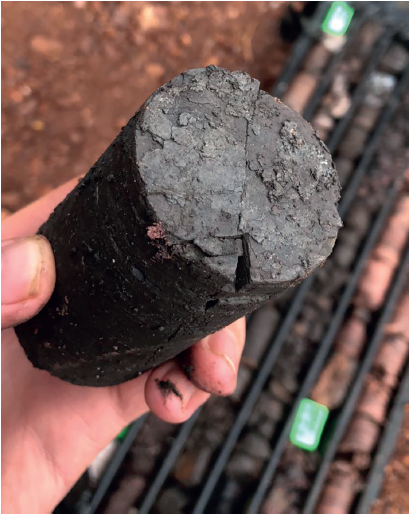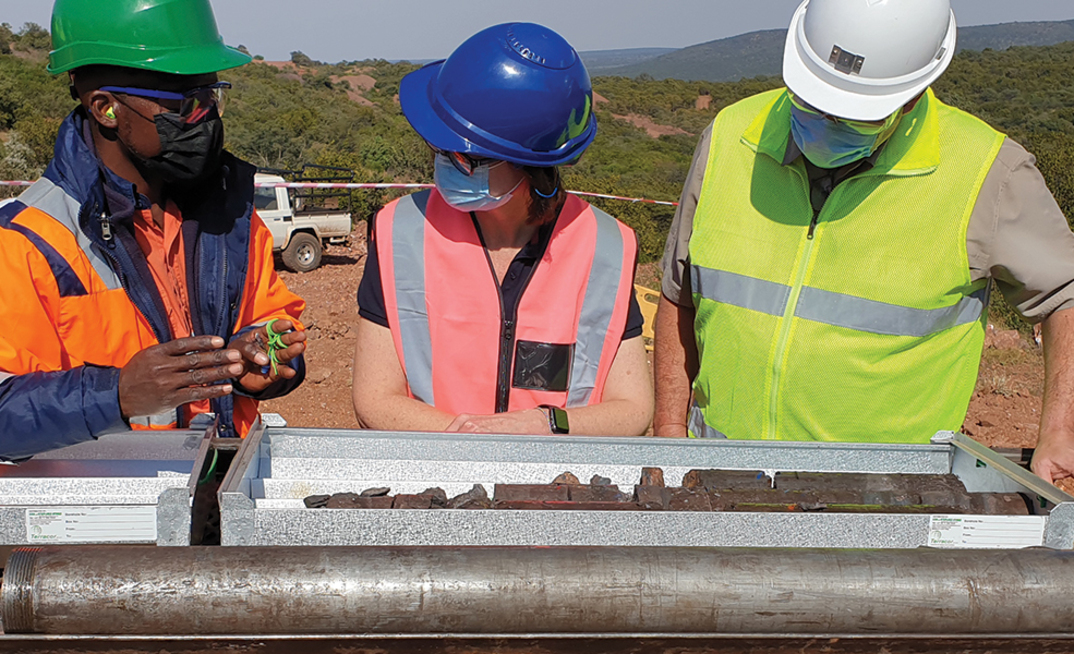A cluster of high-grade deposits in a region well-connected to terrestrial and maritime infrastructure looks set to provide a secure supply of high-purity manganese to the lithium-ion battery industry.
Historically used as an additive to steel, manganese is becoming an increasingly important component in the lithium-ion battery industry. Electric vehicle (EV) manufacturers - including Tesla, VW and BMW - favour nickel-manganese-cobalt or lithium-ion-manganese oxide batteries.
As a result, demand for high-purity manganese salt - or manganese sulphate monohydrate (HPMSM) to give it its full name - is set to increase at least ten-fold by 2030.
In order to meet this soaring demand, Giyani Metals is developing a sustainable, low-cost, high-margin project in one of Africa's most stable and investment-friendly destinations.
The TSX-V listed junior holds a number of mining titles in southern Botswana, close to the border with South Africa, at a site initially prospected by Rand Mining prior to the African independence movements of the 1950s and 1960s. Aside from a small Chinese operation in the 1990s, the deposit has lain more or less unexploited ever since.
"The site itself looks like it was suddenly abandoned," the company's CEO Robin Birchall said. "You can see that the infrastructure around the mine is fit for a mine far bigger than the one actually built."
This infrastructure, which includes road and rail access, proximity to the electrical grid and nearby towns, is a key feature in the K.Hill project's low estimated start-up capex of $118 million and its lightening fast payback period of three years.
To build a resource estimate, however, Birchall had to start from scratch upon taking the reigns in October 2017.
"There were no records left behind from the 1960s or 1970s, we had to do basic grassroots exploration and then a preliminary economic analysis, and then the metallurgical work" he said.

A core sample from drilling at K.Hill
A resource estimate released in August 2021 registered 1.6Mt of manganese oxide at 22% grades in the indicated category and a further 1.4Mt at grades of 13.9% in the inferred category. The feasibility study, undertaken by SRK Consulting, envisages an initial production capacity of 100,000tpa of HPMSM.
The company has had to ride the waves of feast-and-famine in the Canadian capital markets.
"We were lucky enough to catch the tail end of the 2017/18 lithium boom," Birchall said. "We met with Perth-based brokers and were able to close the book before Australia Day in 2018."
Raising capital became a lot tougher in 2019 and 2020, but in 2021 Giyani raised a further $23 million through two private placements as Canadian interest in the battery metals sector was rekindled.
"In reality, juniors always consume more money than they think they will need, so when more became available in November, we took it," sad Birchall. The company's largest shareholder, with around 9% of equity, is RAB Capital, the hedge fund founded by UK investor Phillip Richards.
That capital has already been put to good use over the course of 2021 through the deepening of the exploration programme around the K.Hill project and at the nearby Otse deposit.
Regarding the latter, as of December 2021, drilling at the South Pit was complete while the North Pit campaign was halfway to completion and samples were undergoing metallurgical testing.
Birchall is confident the results of the programme, expected in January 2022, will provide a catalyst to share price growth.
"The drill results have been fabulous," he said. "We've had extremely high-grade interceptions. It's a different type of mineralisation and we're going to need some time to get the results of the metallurgical testwork, but it points to a transformation of the project, a significant increase in throughput and a need for a new resource estimate and feasibility study.
A further crucial step in de-risking the project is proving that it can produce consistent, high-quality, low-carbon product. Once the final specifications of the inputs are confirmed by the latest round of metallurgical tests, Giyani will embark on the construction of a demonstration plant, to be fabricated in South Africa and assembled close to the K.Hill site.
"We've been working on the design for the last four or five months. Once we have the final specs, we will seek approval from the board to start fabricating the plant, which will be a huge leap forward for the company," Birchall said. The company has already received requests from a top-tier automobile manufacturer to test the first HPMSM crystals when they become available at the end of the year. Birchall hopes that this can develop into a commercial offtake agreement.
This fast-paced development has been made possible, at least in part, by Botswana's status as one of the most stable, developed and investment-friendly jurisdictions in Africa.
It is the longest-serving democracy on the continent and had posted steady growth of 4-5% in the years before the pandemic.
The country ranks first in The Economist's ranking of emerging markets based on their financial strength, with low public and foreign debt, a low cost of borrowing and strong reserve cover. The government royalty on manganese production is 3%, and 100% of mining capex expenditure is deductable against taxes.
Perhaps the biggest advantages are in physical infrastructure and human capital, however. In addition to having road and rail access to five ports, the project is near a major power line.
"Our number one differentiator is our proximity to the power line," Birchall said. "Having to string up your own power line can quickly add $150 million to a project's capex. But more than that, we don't need to build a hospital or a main camp because there are a number of towns all within ten kilometres of the site. Our employees can drive to work."
With its prospective customer base very sensitive to issues of sustainability and carbon footprint, ESG is of fundamental importance to Giyani Metals.
The company conducts regular ESG reporting and is expanding its social outreach into the region around the deposit with a highly experienced full-time manager focused on ESG starting work in September.
"One of the things we learned from our dialogues with local politicians and citizens is that - rather than more scholarships to study abroad - the country needs more jobs that can keep this talent in the country," Birchall said. "We're also looking at apprenticeships and internships to allow Botswanans to apply and develop their skills in the industry."
The coming months will provide a number of strong catalysts that look set to boost interest in Giyani Metals: The updated resource estimate; the completed and optimised feasibility study; news on the demonstration plant; and the potential to tie-up an agreement with a major end-user client.
"Our goal is to move as fast as possible towards production, even if it means we don't go full-scale immediately in order to keep the capex spend under the C$160 million mark," Birchall said.
However, he believes the more likely scenario is that a bid will come in from an interested end-user. Korean firms in particular, though leaders in the battery manufacture market, have been slow to secure supply.
"We're already starting to see that happen in the lithium side because that part is better understood. We could see something similar in manganese in the coming 12 months, as companies look to secure their supply for thirty years. All we have to do is perform."
ABOUT THIS COMPANY
Giyani Metals Corp.
Giyani is a mineral resource company focused on the advancement of its manganese assets within the Kanye Basin in south-eastern Botswana, Africa (the “Kanye Basin Prospects”).
HEAD OFFICE:
- 2010 Winston Park Drive, 2nd Floor, Oakville, ON, Oakville, L6H 5R7, Canada
- Telephone: +1 2892917632
- Email: info@giyanimetals.com
- Web: giyanimetals.com
SOCIAL MEDIA:
DIRECTORS:
- Jonathan Henry
- John Petersen
- Michael Jones
- Stephanie Hart
- Robin Birchall
QUOTED SHARES ON ISSUE:
-
202.13 million
MARKET CAP:
-
C$55 million
MAJOR SHAREHOLDERS:
- RAB Capital, 9.1%
- Directors & Management, 3.0%
- MMCAP Asset Management, 2.9%
- APAC Resources, 1.4%
- Sentry Resources Opportunities, 1.4%



























